This article describes the measurement of oil and water in seeds according to the ISO 10565 method.
Summary
- Easiest and most reliable method available; well-suited for non-technical staff
- Precise, quick, and repeatable
- Allows easy linear calibration, and does not require chemometrics
- Sample preparation is minimal
Application
Growers, breeders, and buyers require a fast and accurate way to determine oil and water content in oilseeds, as this would allow them to establish the commercial value of crops like groundnut, soya bean, linseed (flax), sunflower, and rapeseed (canola). Nuclear magnetic resonance (NMR) provides a fast, clean, and precise alternative to conventional wet chemical methods. In addition, calibrations are relatively easier to maintain when compared to near infrared (NIR).
The NMR method is even used for quantifying oil yield in the development of better crop varieties. It is also used by seed crushers to determine the oil content of the press cake and residues in order to establish extraction efficiency (ISO 10632).
Advantages of NMR
Although solvent extraction methods are often used for determining oil content, these techniques need skilled operators, can be time-intensive, and require the use of dangerous solvents.
While NIR is fast, it can only determine the surface layer; hence, sample grinding may be needed for better reproducibility. NIR also needs calibration utilizing a huge number of reference samples that represent a wide range of factors such as grain or seed type, water and oil content, and particle color or size. Hence, if the sample is beyond the scope or range of the calibration, the outcomes may unknowingly be incorrect.
In contrast:
- NMR is a bulk measurement method and hence can measure all the oil present in the sample, irrespective of the particle size
- NMR eliminates the need for solvents that are not only dangerous to use, but also difficult to dispose
- Only three samples are required to obtain water and oil calibrations
- NMR is the preferred technique for sunflower seeds because it is not affected by color; hence, it is utilized as an official USDA GIPSA technique
- The ISO 10565 method, which has been implemented by Federation of Oils, Seeds and Fats Associations (FOSFA), uses NMR
- NMR enables quick measurements for a wide range of sample sizes

The MQC+ benchtop nuclear magnetic resonance (NMR) analyzer offers an alternative approach to NIR and wet chemistry; it is fast, simple to calibrate, easy to execute, and does not require extensive sample preparation. Hence, it is perfect for regular operation and does not need extra chemicals, specialist operator training, or complex calibrations.
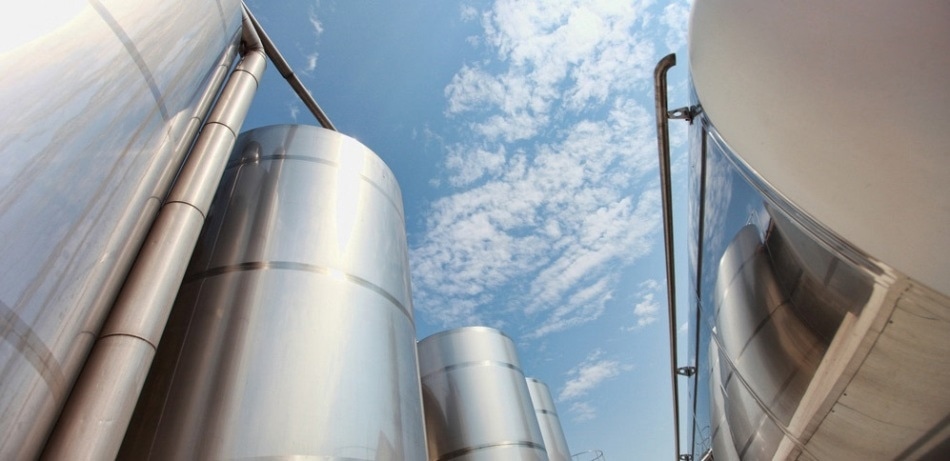
Method
During the measurement of oil and water, two analytes are differentiated based on their NMR relaxation times. Solids within a sample produce NMR signal that decays quickly, leaving signals that originate only from oil and bound water. The signal from the bound water subsequently decays, leaving the signal from the oil only. The variation between the oil and bound water + combined oil signals is used to determine the water content.
The ISO 10565 technique proposes that water content should be below 10% for all seeds to achieve consistent results. In reality, this value could be higher by a few percentage, based on the type of seeds.
Calibration
Since NMR is a comparative method, a set of calibration standards containing actual seeds with known water and oil contents should be acquired before measurements are made.
Although just three well-defined seed standards are needed, it is best to have at least six seed standards with oil and water contents, spanning the concentrations of interest. Soxhlet extraction and oven drying are respectively used to determine oil and water reference values.
The calibration quality will considerably rely on the precision of this reference data. But NMR is more reproducible when compared to wet chemical techniques, and hence, errors are decreased by examining more reference samples. On the other hand, NMR can produce a primary calibration for total oil content using the pure oil to be examined.
Measurement
Samples are initially added to glass NMR tubes up to a predefined mark and then weighed. Bulk samples are usually conditioned at room temperature in a stable setting. As per the ISO standard methods, the measurement time is usually 16 seconds for each sample.
Results
Usually, optimum precision is obtained when the standards are of the same species just like the measurement samples. But numerous seed types with oils that have an analogous hydrogen density are likely to lie on the same calibration.
Nine rapeseed samples that were separately analyzed were measured. The oil content of these samples differed between 39% and 51%, and their water content differed between 5.2% and 7.1%. Calibrations for water and oil were developed as per the ISO 10565 standard, using the MultiQuant software from Oxford Instruments. The software can be used to measure up to four sample parameters at the same time.
Apart from water and oil content, oil per dry weight can also be quoted and normalized to a specific water content (for instance, 8% or 9%). Figures 1 and 2 show the resulting calibrations.
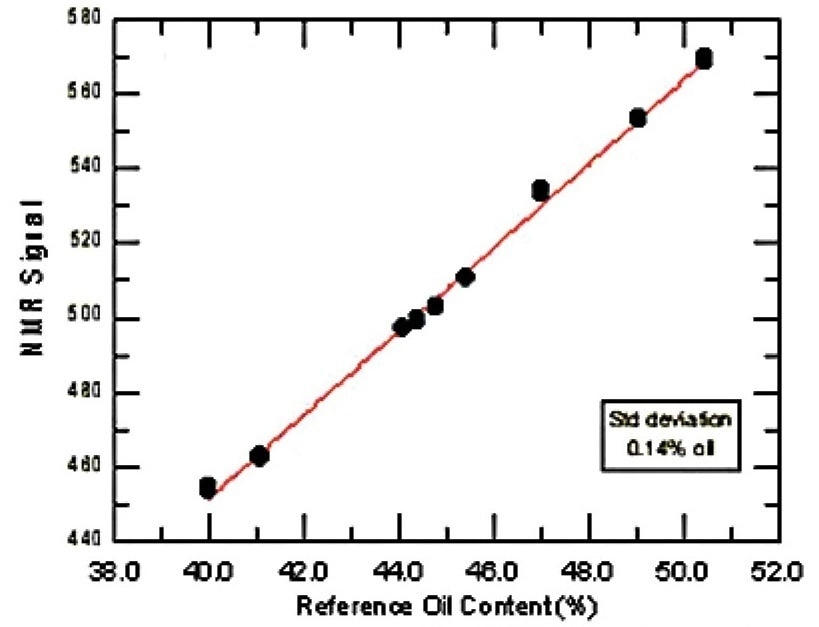
Figure 1. Calibration of oil content of rapeseeds in the presence of water (Standard deviation of 0.14%).
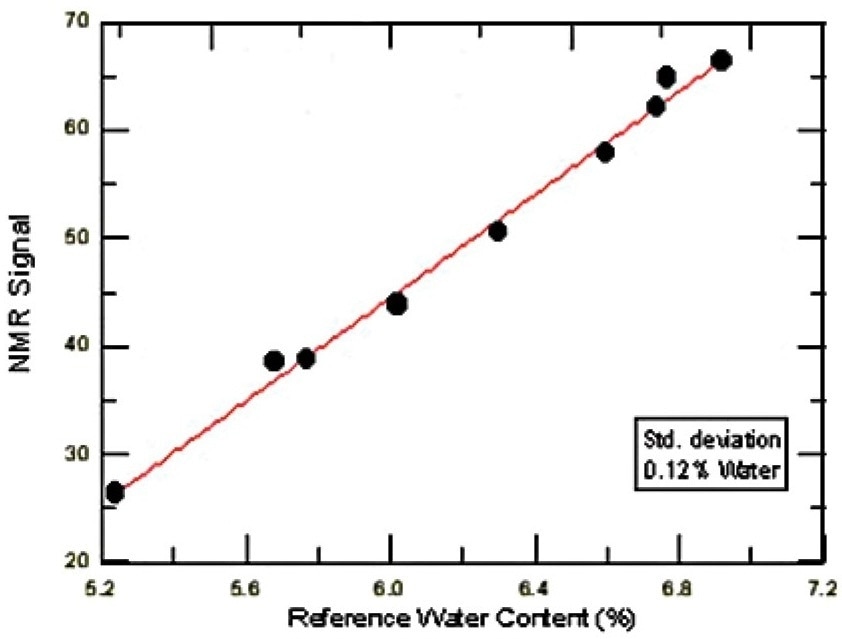
Figure 2. Calibration for water content of rapeseeds in the presence of oil (Standard deviation 0.12%).
To test instrument repeatability for oil, a single sample was measured 10 times, without taking it out from the instrument. In addition, five different portions of the same sample were measured to test sample reproducibility for oil content. Instrument repeatability and sample reproducibility were shown to be 0.03% and 0.24%, respectively, due to the varying distribution of seed oil contents in every portion. Table 1 shows the results from both sets of experiments.
Table 1. Instrument repeatability and sample reproducibility
| value |
Repeat Measurements |
Mean |
SD |
| 44.25 |
44.29 |
44.25 |
44.22 |
44.23 |
44.26 |
44.27 |
44.22 |
44.23 |
44.22 |
44.18 |
44.24 |
0.03 |
| value |
Portion Measurements |
Mean |
SD |
| 39.5 |
39.7 |
39.2 |
39.4 |
39.5 |
39.8 |
39.5 |
0.24 |
Conclusion
- NMR is impervious to the air voids present between the powder or grains
- NMR seldom requires calibration adjustment, and is extremely stable over the long term
- The NMR method is non-destructive, which means the same sample can be measured numerous times before it can be analyzed by other methods
- Rapid sample measurement time (usually 16 seconds)
- Measurement accuracy is good when compared to wet chemical techniques
The MQC+ also provides the following benefits:
- Sample throughput is increased by the auto-weighing feature used in the MQC+5. Samples can be determined without using the mouse or keyboard, which saves time.
- The probes can be easily removed for cleaning or changing the probe size, without using any tools.
- The potential to export and import data allows the instrument to be fitted into existing systems.
- After the measurement, oil content can be automatically calculated with respect to dry weight, 9%, or other water content, thus minimizing work.

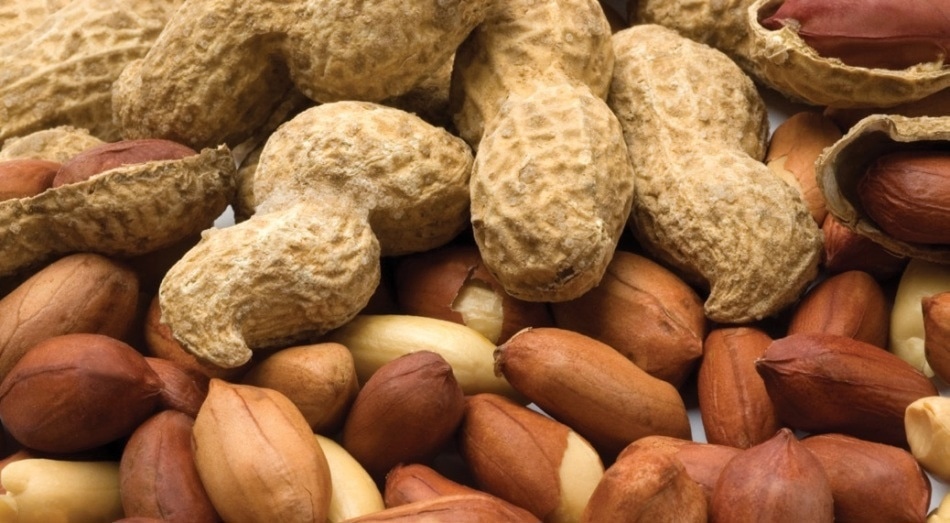
Oxford Instruments provides numerous packages that are particularly customized for measuring oil and water in oilseeds and their residues (meals or pressed cake). Two instruments are appropriate for this application, both of which comply with the industry standard ISO 10565, for a wide range of sample volumes (indicated in brackets):
For large seed/sample analysis:
- MQC+5 with 40 mm (40 mL) or 51 mm (80 mL) diameter probes
For small, single, or low-quantity seed analysis:
- MQC+23 with 10 mm (1 mL), 18 mm (7 mL), or 26 mm (14 mL) diameter probes
The MQC+5 or MQC+23 can be controlled by its own integrated computer using Microsoft Windows® or through a standalone computer. The system includes:
- Glass tubes
- Test/tuning sample
- MultiQuant software including RI Analysis, RI Calibration, and the EasyCal “Oil and Water in Seeds” application
- Oil and water “calibration maintenance standards” (for 26, 40, and 51 mm probes only)
- Method sheet
- User manuals
Moreover, users may also wish to purchase:
- Required—A precision balance (three decimal places for 1, 7, and 14 ml samples, and two decimal places for 40 and 80 ml samples)
- Optional—A dry heater and aluminum block featuring holes for sample conditioning at 40 °C (10, 18, and 26 mm probes only)
N.B. The ISO technique specifies measurement at a nominal room temperature of 17 °C–28 °C. Conditioning at 40 °C is preferred where accurate measurements are needed only for oil content.
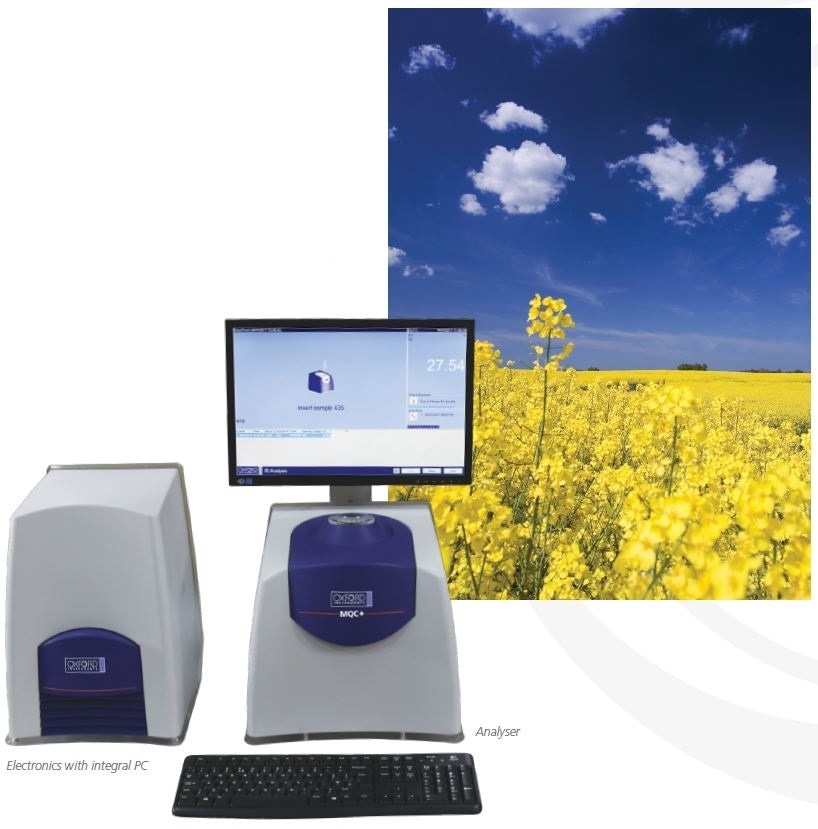

This information has been sourced, reviewed and adapted from materials provided by Oxford Instruments Magnetic Resonance.
For more information on this source, please visit Oxford Instruments Magnetic Resonance.